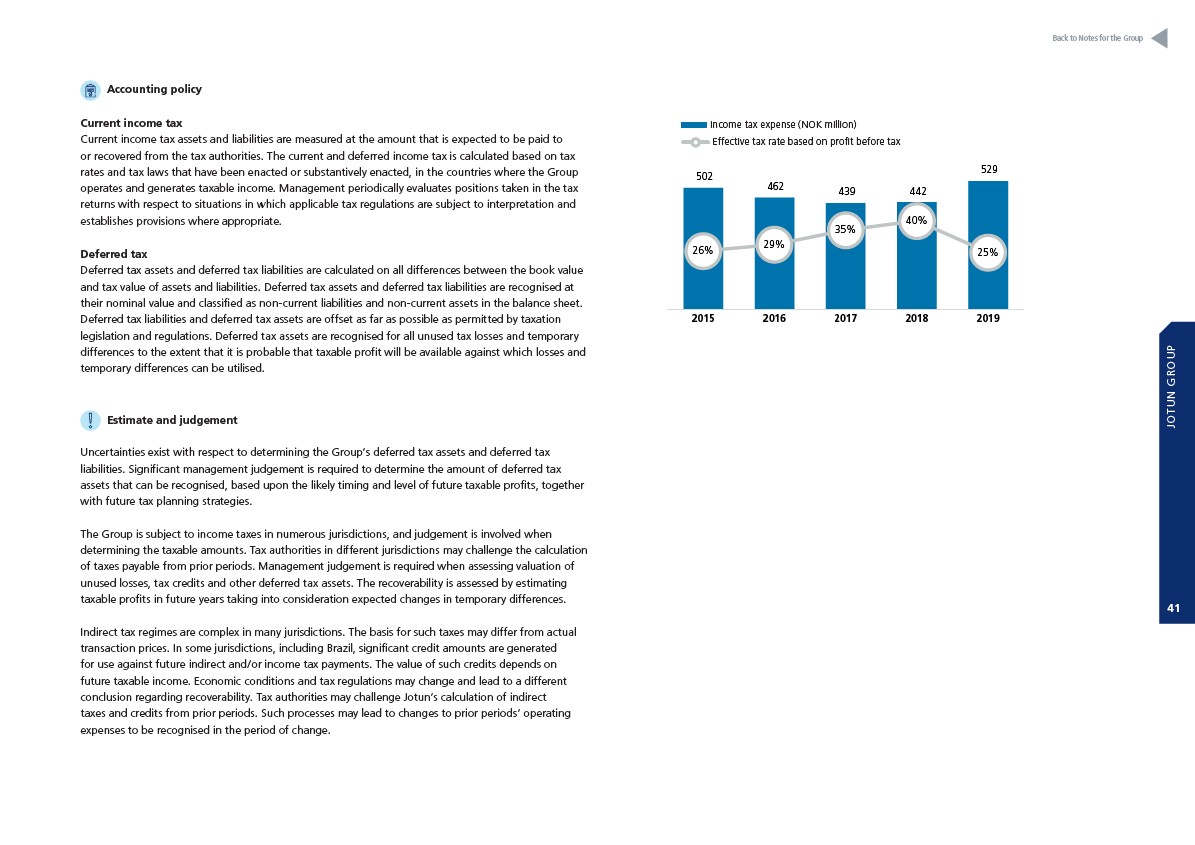
Accounting policy
Current income tax
Current income tax assets and liabilities are measured at the amount that is expected to be paid to
or recovered from the tax authorities. The current and deferred income tax is calculated based on tax
rates and tax laws that have been enacted or substantively enacted, in the countries where the Group
operates and generates taxable income. Management periodically evaluates positions taken in the tax
returns with respect to situations in which applicable tax regulations are subject to interpretation and
establishes provisions where appropriate.
Deferred tax
Deferred tax assets and deferred tax liabilities are calculated on all differences between the book value
and tax value of assets and liabilities. Deferred tax assets and deferred tax liabilities are recognised at
their nominal value and classified as non-current liabilities and non-current assets in the balance sheet.
Deferred tax liabilities and deferred tax assets are offset as far as possible as permitted by taxation
legislation and regulations. Deferred tax assets are recognised for all unused tax losses and temporary
differences to the extent that it is probable that taxable profit will be available against which losses and
temporary differences can be utilised.
Estimate and judgement
Uncertainties exist with respect to determining the Group’s deferred tax assets and deferred tax
liabilities. Significant management judgement is required to determine the amount of deferred tax
assets that can be recognised, based upon the likely timing and level of future taxable profits, together
with future tax planning strategies.
The Group is subject to income taxes in numerous jurisdictions, and judgement is involved when
determining the taxable amounts. Tax authorities in different jurisdictions may challenge the calculation
of taxes payable from prior periods. Management judgement is required when assessing valuation of
unused losses, tax credits and other deferred tax assets. The recoverability is assessed by estimating
taxable profits in future years taking into consideration expected changes in temporary differences.
Indirect tax regimes are complex in many jurisdictions. The basis for such taxes may differ from actual
transaction prices. In some jurisdictions, including Brazil, significant credit amounts are generated
for use against future indirect and/or income tax payments. The value of such credits depends on
future taxable income. Economic conditions and tax regulations may change and lead to a different
conclusion regarding recoverability. Tax authorities may challenge Jotun’s calculation of indirect
taxes and credits from prior periods. Such processes may lead to changes to prior periods’ operating
expenses to be recognised in the period of change.
Income tax expense (NOK million)
Effective tax rate based on profit before tax
502
Income tax expence (NOK million)
Effective tax rate based on profit before tax
462 439 442
529
26%
29%
35%
40%
25%
60%
50%
40%
30%
20%
10%
0%
600
500
400
300
200
100
0
2015 2016 2017 2018 2019
Back to Notes for the Group
JOTUN GROUP
41